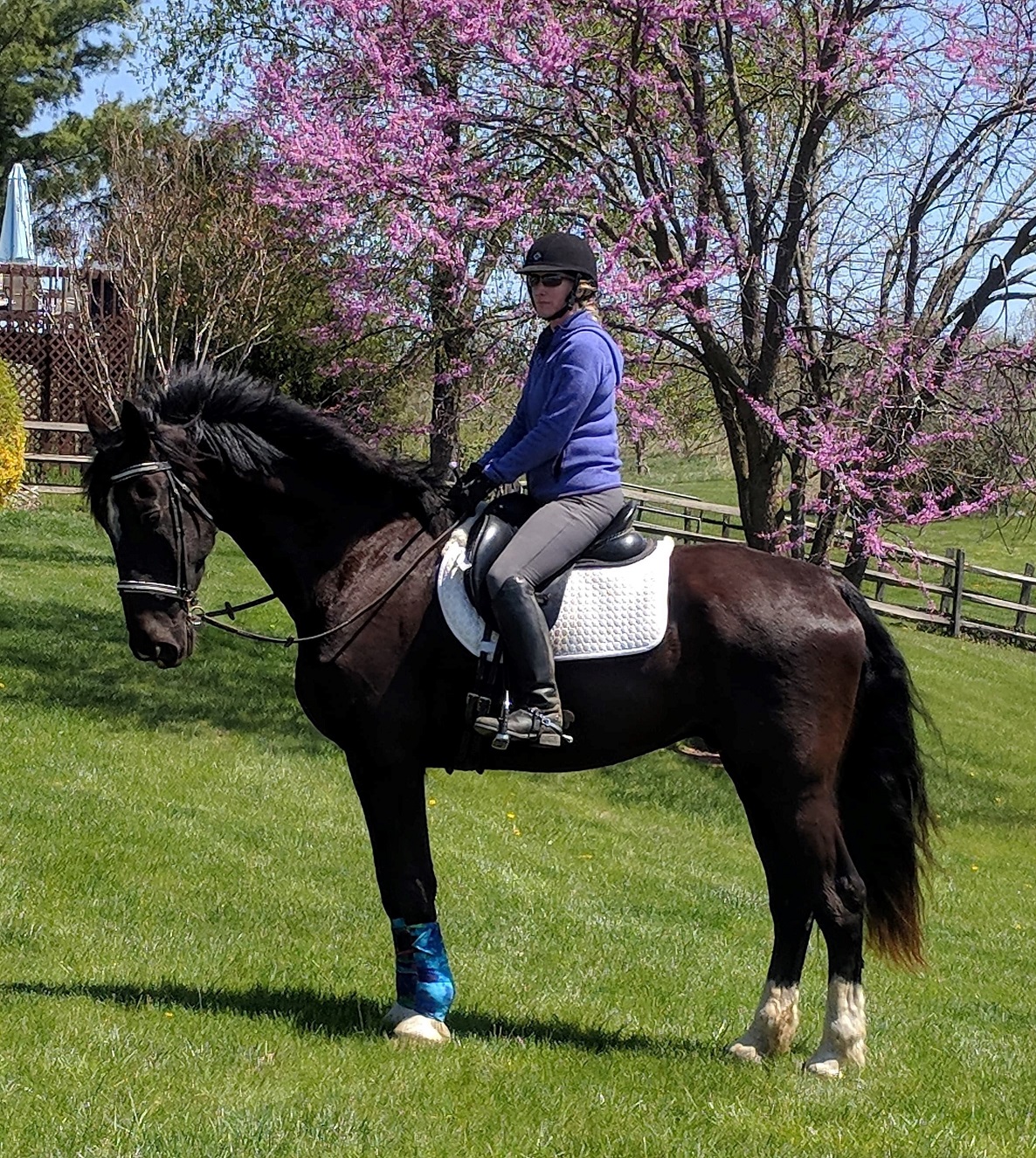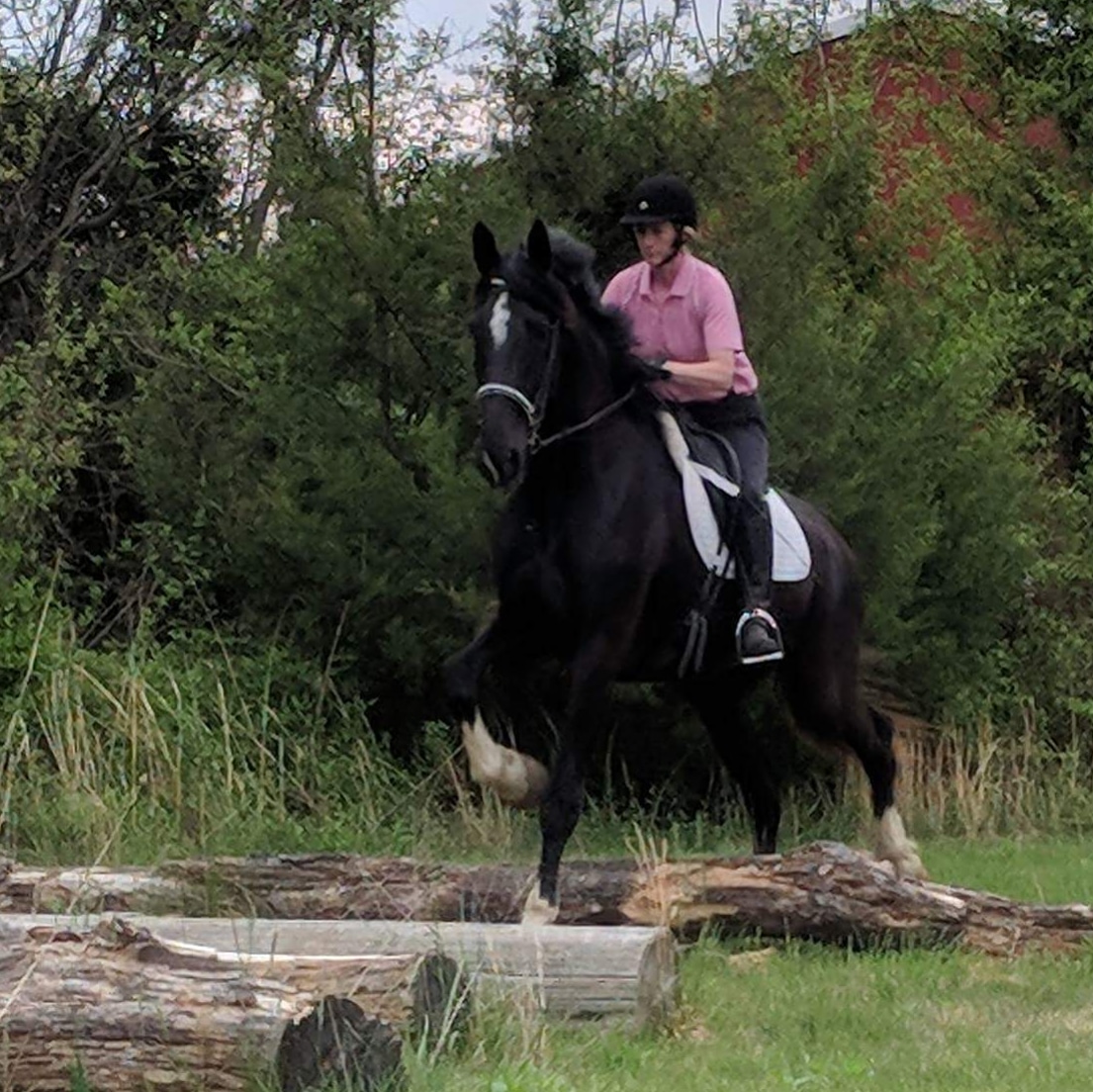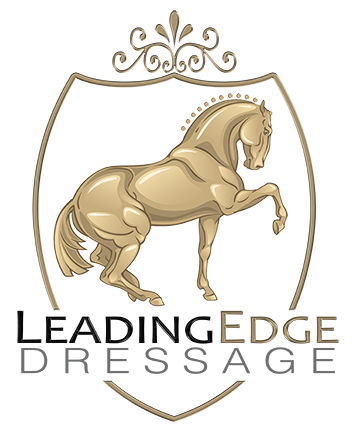Repost from 2018


The big black gelding stood eyeing me from the grooming area. His owner was busily grooming and prepping him for me. His expression was one of reservation. Not at all that he looked nervous or worried, but there is a certain look that shows mistrust. His story was a sad one. A Dutch Harness horse, who had washed out from a culture that relies upon their horses for daily transportation. Carriage accidents, fear, more carriage accidents, and eventually ending up at an auction. His current owner pulled all 18 hands of him off a stock trailer filled with many more sad stories that were headed to an unpleasant end to life. This guy got lucky. He gets a second chance at life. And I am grateful to be one of the contributors to his future. From my perspective, showing him the way to be a good riding partner will give him a much better shot at job security. As well as preventing him from ever ending up on a trailer headed to the butcher again.
She was telling me his story as I watched her groom him. He had been with her for a year at this point. She had spent many vet visits, and lots of groceries, along with countless hours of rebuilding his mental state over this last year. And she had done a super job with him. Lots of groundwork, confidence building, de-spooking, and daily handling over the last year had changed him dramatically. So many people underestimate the importance of good solid groundwork. Even on mature horses that “should already know this” it can be a missing link to successful riding. As I was going to be riding him for the next several months, I was really glad to see this was solidly addressed already. Watching the two of them together I could see they had built a foundation of trust and understanding.
The first few rides were a mutual interview, he assesses my determination, whether or not I spook easy or am anxious, me asking him to explain to me what he knows and what is hard or scary. His ears and expression communicated clearly; he was not going to easily follow my lead. A good leader doesn’t need to argue, they have the confidence of direction that relays a sense of trust in those around them, like a Jedi mind trick. I suggest “you should go forward” a change of direction, show no fear or worry, and a few minutes later he is happily walking around. As always, my first task is preflight check list
1) Is he soft in the rein aids, following and willing or resistant? happily yes
2) Stop and go, the gas pedal and brakes need to work. Once again, I am pleased that he says yes.
3) Is he supple to leg aids, does he understand and move away from them? Here he says no,
4) How is his freedom or willingness to go forward…minimum. It is like when you tell your kids to clean their room, that sticky begrudgingly doing a task even though they don’t want to, kind of a feeling.
With my first list done, it is time to pick priorities for our work.
Dressage 101: first they must go forward, without that you have nothing. No gas in the car. And it is not just that the movement actually happens, but it needs to happen with a willing enthusiasm, not constant nagging. I am not going to ask him to be “on the bit” or “round” before I have an understanding that legs on mean go forward. One concept at a time for now, go forward.
I attribute some of this horses’ lacking to just having no idea that he can or would be allowed to go. In the early stages of training, especially on a horse of this size, going can be an intimidating thing to a rider. It can feel a bit out of control. It is unfortunately fairly common for the horse to get conflicting signals, ask to go forward, grab reins and say not so fast. Eventually they learn to go minimally, in anticipation of a strong rein response. The bigger horses have so much movement, their big strides cover a lot of ground which equates to a sensation of speed for the rider, which ultimately can cause tension or fear. This can end up in a misunderstanding that can be a major cause of stress between horses and riders that can potentially escalate into what would appear to be an unruly or bad behaved horse.
I have a theory that if a rider holds with 5lbs of pressure and has to use 10 lbs of kicking force, then the same result should be possible with a few ounces of rein pressure and a pound of leg. The bottom line is, if you have to pull harder on the rein you need to go back to teaching your horse what softness means.
I had seen him canter only one time in a video, nose to the wall, running sideways, no control at all. So along with instilling an understanding of leg aids, we worked on forward. Leg goes on, horse goes forward. It only took a short time for him to be happy and willing, because he was allowed to go at whatever speed he needed, with a “connected but not restricting rein” (the important part). It is absolutely essential for a rider to have enough balance and confidence that they can allow the horse to go when they ask them to. This big Dutch horse had no idea he could canter, no one had ever let him. Horses love to run, canter, gallop, play, if we suppress this desire completely there is no happiness in their work. But if you can learn to allow and channel the flow and grace of the energy, you can fly, or dance with them. This we all should aspire to. You have no idea how beautiful this dance between horse and human can be if you extinguish the freedom that creates it.
New goal: apply this concept to my life, freedom forward, not trudging forward!
